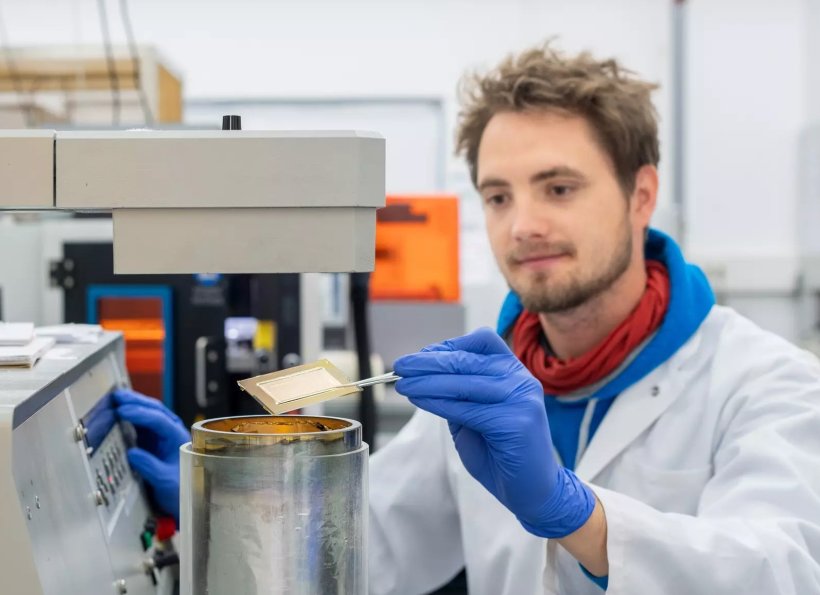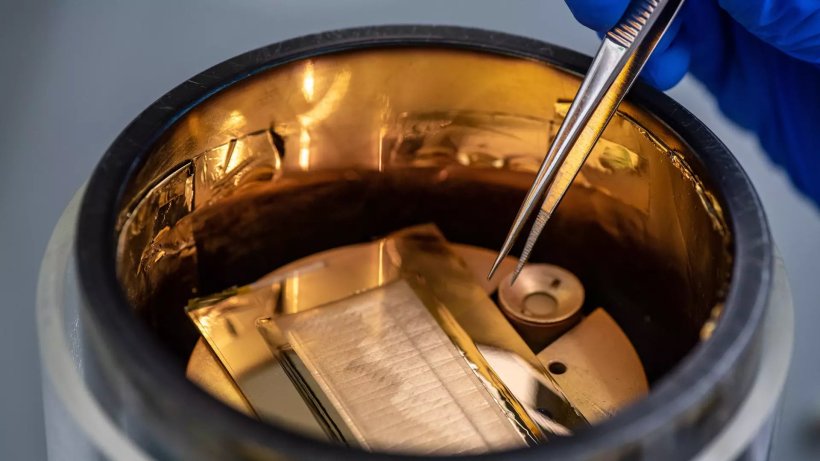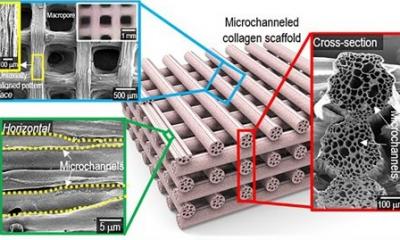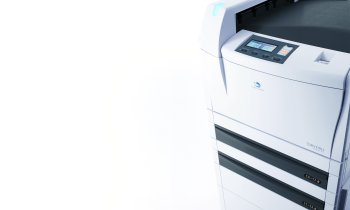
Image source: Andreas Heddergott / TUM
News • New printing method
Self-folding 4D electrodes enhance nerve stimulation
Specific nerves may be stimulated artificially, for example to treat pain. The finer the nerves, the more difficult it is to attach the required electrodes.
Researchers at the Technical University of Munich (TUM) and NTT Research have now developed flexible electrodes produced with 4D printing technology. On contact with moisture, they automatically fold and wrap themselves around thin nerves.
The scientists published their findings in the journal Advanced Materials.
The nervous system controls our movements through electrical impulses. These pass from nerve cell to nerve cell until finally, for example, a muscle contraction is triggered. Nerve cells can also be stimulated artificially, triggering the nerves with current pulses via acutely applied or implanted electrodes. Peripheral nerve stimulation is used, for example, to treat chronic pain or sleep apnea. Furthermore, there are clinical applications for stimulating the vagus nerve to treat for depression and epilepsy. With a diameter of several millimeters, this nerve is relatively thick.

Image source: Andreas Heddergott / TUM
In comparison, stimulation of nerves with diameters ranging from tens to hundreds of micrometers is more challenging. These thin as hair nerves require electrodes produced with fineness and precision. Inserting and attaching the electrode to the nerves in the micrometer range is also more complicated.
4D printing involves reshaping 3D-printed objects in a targeted manner, for example using moisture or heat. Researchers at TUM and the Medical & Health Informatics (MEI) Lab at NTT Research have now developed 4D-printed electrodes that wrap themselves around ultra-thin nerve fibers when inserted into moist tissue. The electrode is initially fabricated using 3D printing technology, allowing flexible adaptation of the shape, diameter, and other features.

Image source: Andreas Heddergott / TUM
The outer sheath of the electrode comprises a biocompatible hydrogel that swells upon contact with moisture. The material on the inside is flexible but does not swell. This configuration causes the electrodes to automatically wrap themselves around the nerves fibers when exposed to the moisture of the tissue.
The structured titanium-gold coating on the inside of the electrodes transmits electrical signals between the electrodes and the nerve fibers. "The close contact between the folded cuffs and the nerves allows us to both stimulate the nerves and measure nerve signals with the electrodes," says Bernhard Wolfrum, Professor of Neuroelectronics at the Munich Institute of Biomedical Engineering (MIBE) at TUM and head of the study. This expands the range of possibilities for potential applications.
A variety of biomedical applications for the new electrodes are conceivable in the future. One example is improved implants for sleep apnea. In patients who suffer from sleep apnea, the tongue drops back toward the throat and briefly obstructs the airway. Stimulating the muscles that pull the tongue forward can correct the problem. "Currently, however, selectively stimulating only those muscles that move the tongue forward is difficult. This is where the flexible electrodes might be applied to facilitate stimulating nerves more selectively in the future," says Professor Clemens Heiser, senior physician at the Department of Otolaryngology at the TUM University Hospital Klinikum rechts der Isar.
The self-folding electrodes are robust and easy to manage. The research team has already demonstrated the application of the electrodes in locusts: fine nerves fibers with a diameter of 100 micrometers were sheathed without damaging the nerves. This allowed the scientists to stimulate muscles in a very targeted manner. While still in an early development stage, the electrodes may provide an important means of deploying peripheral nerve stimulation for broader clinical application in the future.
Source: Technical University of Munich
18.07.2023











